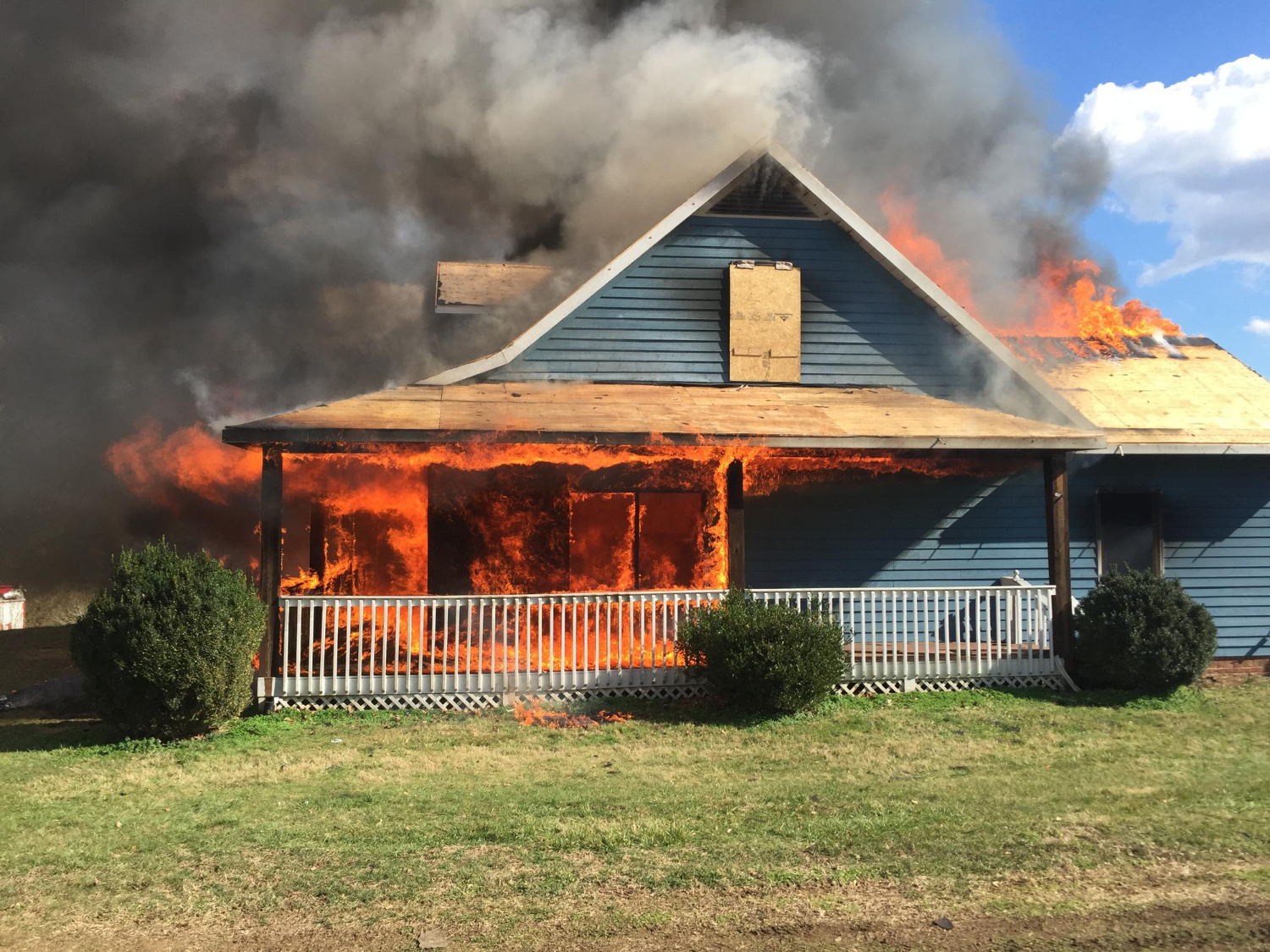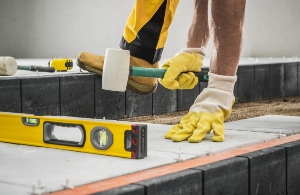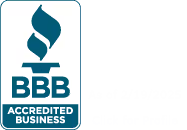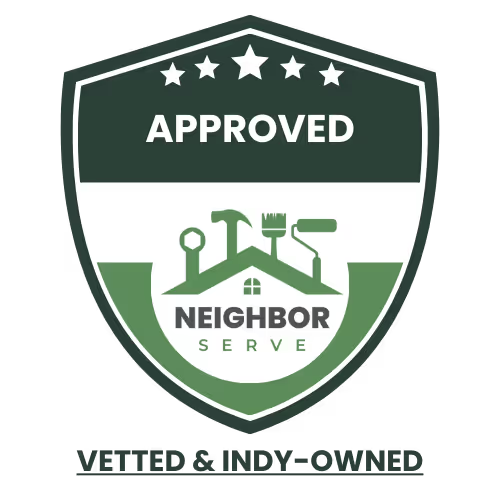US fire departments respond to ~ 328,590 home structure fires per year; causing ~$8.9 billion in direct property damage, according to NFPA.
After a fire, the first few days are often the most overwhelming from finding shelter to starting insurance claims. The most important things to do right after a house fire are to find a safe place to stay, contact your insurance company, and get a copy of the fire report.
These steps will help you start the recovery process and ensure you have the support you need. Taking care of yourself and your loved ones is also key during this tough time.
We’ll walk you through how to handle immediate needs like food, clothing, and shelter. We’ll also cover practical tips for securing your property and beginning the cleanup process.
Here's what you need to know:
- How to stay safe and assess house fire damage
- How to manage insurance and financial recovery after a house fire
- Fire damage restoration: Key steps to recover your home
- Where to find help and recovery resources after a house fire
Keep reading! With the right approach, you can get through this difficult situation and start rebuilding your life.
How to stay safe and assess house fire damage
Before returning home after a fire, it’s vital to ensure the structure is safe, utilities are off, and the full extent of damage is professionally assessed.
According to the U.S. Fire Administration, residential fires have remained consistently high over the past decade, a reminder that structural damage and safety risks are a national concern, not isolated events.
After a fire, hidden hazards like structural instability, live electrical wires, and lingering toxins can make re-entry dangerous. Prioritizing personal safety and damage assessment is the first step in reclaiming your property responsibly.
Initial safety precautions
Only return to the property once the fire department gives official clearance. Fires often compromise floors, ceilings, and support beams, posing collapse risks even after flames are extinguished. Always wear protective gear, sturdy boots, gloves, long sleeves, and a high-quality respirator or mask to protect against soot and airborne particles.
Avoid turning on gas, water, or electricity until certified inspectors confirm it’s safe. Carbon monoxide and electrical hazards are common post-fire threats. Keep fire extinguishers and battery-powered lighting nearby, and open windows briefly to air out smoke, but do not linger inside without proper ventilation or monitoring.
If you're unsure whether the air is safe or if there's potential for structural compromise, contact licensed inspectors before entering deeper areas of the home.
How to secure your property after fire damage
Before cleanup or inspections begin, your damaged home must be protected from secondary risks like theft, vandalism, and weather exposure. Securing the site preserves what remains and supports insurance claims.
First, report the fire to local law enforcement and document that the property is vacant or damaged. This notification may serve as evidence later if unauthorized entry occurs. Then, cover exposed areas such as broken windows, doors, or roof openings with plywood, tarps, or temporary shields. These measures reduce exposure to rain, wind, or animal intrusion.
Ensure all utilities, gas, water, electricity, are shut off until certified professionals deem systems safe. This reduces the risk of fire reignition, leaks, or electrical hazards. Board up and place visible warning signs like “Do Not Enter” or “Private Property” near damage points to deter unauthorized access.
Where possible, employ periodic surveillance or security services to monitor the property until repairs begin. Document every intervention you make, date, photo evidence, contractors involved, since insurers often require proof of your efforts to mitigate further loss.
How to document and assess fire, smoke, and water damage
Once the structure is declared safe, begin a detailed assessment of all visible and hidden damage. Take photos and videos of every room, even if it appears unaffected. Include ceilings, flooring, appliances, fixtures, and all personal belongings.
Pay attention to:
- Structural integrity: cracked beams, sagging ceilings, damaged foundations
- Smoke and soot: residue on walls, ceilings, vents, and fabrics
- Water damage: soaked flooring, warped materials, mold risks from extinguishing efforts
- Destroyed or contaminated personal property: electronics, furniture, documents, clothing
Hire certified inspectors to evaluate electrical, plumbing, and HVAC systems, as fire may have melted wires or caused pressure imbalances in sealed systems. Also request an inspection of attics, crawl spaces, and ducts, where smoke often settles unnoticed.
A comprehensive damage report will be critical for both insurance claims and hiring a licensed fire restoration contractor.
How to manage insurance and financial recovery after a house fire
Filing an insurance claim quickly and understanding your policy are essential steps in recovering financially after a house fire.
In the aftermath of a fire, dealing with insurance may feel overwhelming, but it’s one of the most crucial parts of the recovery process.
Your policy likely covers structural damage, personal belongings, and temporary living expenses, but navigating the process requires documentation, persistence, and clarity.
Filing an insurance claim
Contact your insurance company as soon as possible after the fire. They’ll assign a claims adjuster to inspect the damage and begin evaluating your coverage. You should:
- Create a detailed inventory of all damaged or destroyed items
- Take clear photos and videos of each room and item
- Save all receipts for temporary expenses such as hotels, food, and clothing
- Request a copy of your full policy if you don’t have it on hand
Don’t discard damaged items until the adjuster has documented them. If your claim involves significant losses, consider hiring a public adjuster—a licensed third-party professional who can provide an independent damage assessment and negotiate with your insurer.
Ask about advance payments for immediate needs; many policies include this option while your full claim is processed.
How to work with your insurance agent after a fire
Your insurance agent can be a valuable advocate during recovery, helping you interpret policy language and manage deadlines. Schedule a meeting or call to review your claim status and verify what’s covered.
Stay in regular contact, especially if you face delays or disputes. Keep all communications documented, including emails, call logs, and written notes from conversations.
A helpful agent will assist you with:
- Submitting supporting documents
- Understanding policy limits and exclusions
- Coordinating with contractors and claims adjusters
- Escalating unresolved issues to management if needed
Understanding your insurance policy
Knowing the specific terms of your policy helps ensure you receive the maximum compensation for your losses after a fire.
Insurance policies are complex documents, but after a house fire, understanding exactly what you're entitled to is critical. Misreading a single clause can mean the difference between full compensation and a denied claim.
Start by reviewing these key coverage categories:
- Dwelling coverage (Coverage A): Covers the structure of your home—walls, roof, floors, built-in fixtures. This should reflect the full cost to rebuild your home with similar materials, not just its market value.
- Other structures (Coverage B): Includes detached garages, sheds, fences, or outdoor kitchens damaged by the fire.
- Personal property (Coverage C): Covers belongings like furniture, clothing, electronics, and appliances. Some high-value items (jewelry, art) may require separate endorsements.
- Loss of use (Coverage D): Also called Additional Living Expenses (ALE), this helps pay for temporary housing, meals, and other increased costs of living while your home is uninhabitable.
- Liability and medical payments (Coverage E & F): May cover injuries or damage others sustain on your property during or after the fire.
Next, identify the type of valuation your policy uses:
- Replacement Cost Value (RCV): Reimburses you for the full current cost to replace items or rebuild your home, without depreciation.
- Actual Cash Value (ACV): Deducts depreciation, paying only what the items were worth before the fire.
- Guaranteed Replacement Cost: Some high-tier policies cover the full rebuilding cost even if it exceeds your policy limit—this is ideal for total loss scenarios.
Other clauses to review:
- Debris removal: May cover hauling away damaged materials, which can be expensive.
- Code upgrade coverage (Ordinance or Law): Helps pay for required upgrades to meet current building codes, which older homes often lack.
- Exclusions: Look for what’s not covered, such as mold, intentional acts, or damage from prior neglect.
If anything is unclear, ask your insurer for a line-by-line explanation in writing. You’re entitled to understand every clause, especially when large sums are involved.
A well-informed policyholder is in a much stronger position to negotiate, appeal, or escalate if a claim is denied or underpaid.
What to do if your home is declared a total loss
When fire damage exceeds the value of repairs, your home may be deemed a total loss, triggering a different recovery and insurance process.
If a fire leaves your home structurally unsound or beyond economically viable repair, your insurance provider may classify it as a total loss. This designation means that the cost to rebuild is equal to or greater than the insured value of the property.
While emotionally devastating, understanding your rights and options can help you take back control of the situation.
- Confirming the total loss determination
Your insurer should provide a written damage assessment explaining why the home is considered a total loss. This report will often compare rebuilding estimates to your dwelling coverage limits and include third-party inspection data.
You have the right to request:
- A second opinion or independent appraisal
- Clarification of valuation method used (RCV vs. ACV)
- Access to all damage reports and structural evaluations
If the numbers seem low, especially in high-demand real estate markets, consider hiring a public adjuster or consulting a construction estimator to independently verify rebuilding costs.
- Securing the property post-loss
Even if uninhabitable, you remain legally responsible for the site. Take immediate steps to:
- Board up windows and doors
- Install warning signs such as “Fire Damage – Keep Out”
- Cover roof or wall openings with tarps or bracing
- Notify your local law enforcement that the property is vacant
Failure to secure the site can lead to secondary damage (theft, weather, injury), which may not be covered under your policy.
- Understanding your settlement options
In total loss situations, your insurer typically offers a lump sum settlement based on your policy’s dwelling limit, possibly plus extensions (like code upgrades or inflation protection). Review this offer carefully, and compare it to:
- Current rebuilding costs
- Local real estate market values
- The cost of purchasing a comparable home nearby
You generally have three main choices:
- Rebuild on the same lot using the settlement
- Purchase a new home elsewhere with the funds
- Accept a cash payout and not rebuild
Each option has tax, legal, and logistical implications. Be sure to confirm how your mortgage lender or lienholder will be paid from the settlement, and request all terms in writing, especially regarding lien releases or title transfers.
Rebuilding after a total loss is a long process, but with clear documentation, knowledgeable professionals, and a strong claim strategy, it can also be a fresh start.
Fire damage restoration: Key steps to recover your home
Restoring a fire-damaged home requires a structured plan for cleaning, salvaging, rebuilding, and protecting your health throughout the process.
Once the property is stabilized and the insurance claim is underway, the focus shifts to restoring the home itself.
Fire damage restoration is not just about removing debris, it’s a specialized process that addresses smoke, water, structural compromise, and contamination.
Cleaning and salvaging personal property
Begin with a complete inventory of belongings, separating items that can be restored from those beyond repair. Photos, documents, and valuables should be handled carefully, as soot and water can accelerate deterioration.
Items that may be salvageable with professional help include:
- Clothing – Use heavy-duty detergent and odor neutralizers like baking soda or vinegar.
- Electronics – Do not power them on; consult certified restoration technicians.
- Furniture – Solid wood pieces may be cleaned, while upholstered furniture often requires deep smoke treatment.
- Photos, documents, books – Freeze water-damaged paper items to stop mold growth, then work with conservation specialists.
Avoid DIY cleanup of soot-covered or contaminated items. Improper handling can worsen the damage and expose you to health risks. Hire certified fire restoration professionals with the proper tools, chemicals, and containment equipment.
Choosing a restoration contractor
The right fire restoration contractor ensures safety, compliance, and quality in every phase of your home’s recovery.
After a fire, not all contractors are qualified to handle the complexity of smoke, soot, water, and structural damage. Fire restoration requires specialized knowledge, certifications, and coordination with insurance providers. Hiring the wrong team can lead to delays, unsafe repairs, or denied claims.
When evaluating contractors, look for those with:
- IICRC certification (Institute of Inspection, Cleaning and Restoration Certification), specifically in Fire and Smoke Restoration (FSRT)
- Proven experience handling post-fire building code compliance, such as electrical rewiring, structural bracing, and HVAC sanitation
- A clear process for hazardous material removal, including asbestos or lead testing if your home was built before the 1980s
- Experience working with insurance companies, including the ability to generate Xactimate estimates and submit required documentation
- A local license, proof of insurance (general liability and workers’ compensation), and a permanent business address, not just a P.O. box
Request a detailed, written proposal that includes:
- Scope of work: itemized repairs, restoration techniques, and timelines
- Materials list: especially if requesting fire-resistant upgrades
- Payment terms: avoid large deposits or full upfront payments
- Warranties: for workmanship and materials
- Lien waivers: to avoid future legal disputes with subcontractors
Check the contractor’s status with your state licensing board, Better Business Bureau (BBB), and look for reviews that reference fire-specific projects—not just general renovations.
Avoid “storm chasers” or out-of-state contractors who appear after disasters with aggressive sales tactics. A reputable fire restoration partner will help you not only rebuild but navigate permitting, inspections, and insurer negotiations confidently.
How to prevent mold and protect your health after a fire
Preventing mold after a fire is critical to avoid respiratory issues, structural decay, and secondary damage from water exposure.
Between 2017 and 2021, local fire departments responded to an estimated average of 158,400 home cooking fires per year, causing ~ $1.15 billion in property damage, according to NFPA.
While flames cause visible destruction, the moisture used to extinguish the fire creates an invisible threat: mold. Within 24–48 hours of water saturation, mold can begin growing behind walls, under flooring, and inside ductwork, putting both your home and health at risk.
To reduce mold risks:
- Act fast: Begin water mitigation immediately after the fire is extinguished. If safe, open windows and use high-powered fans to remove humid air.
- Use commercial-grade dehumidifiers to control moisture levels, especially in basements, crawl spaces, and behind walls.
- Remove porous materials: Insulation, carpeting, drywall, and ceiling tiles that are wet or smoke-contaminated should be discarded.
- Sanitize all surfaces: Use EPA-approved antimicrobial treatments to clean walls, floors, and salvageable furniture.
- Test for hidden growth: Hire a mold remediation specialist to inspect the home with infrared or moisture mapping tools. They can provide clearance reports needed for insurance and safety certifications.
Exposure to post-fire mold can lead to:
- Chronic coughing, wheezing, or asthma
- Headaches and fatigue
- Skin irritation and allergic reactions
- Long-term lung conditions, especially in children or seniors
Wearing N95 masks, gloves, and eye protection is essential for anyone entering the affected structure. If mold is already visible or suspected in HVAC systems, it’s best to isolate those areas immediately and let certified remediation experts take over.
Preventing mold isn’t just about preserving the structure, it’s about protecting your family’s health and ensuring a safe, livable home long after rebuilding is complete.
Planning your home rebuild after fire damage
Once cleanup is complete and your insurance claim is approved, the process of rebuilding your home begins. This phase requires careful planning, permits, and the right team to guide you through design, compliance, and material choices. It’s also a chance to upgrade safety features and make your home more resistant to future risks.
Your fire restoration contractor should collaborate closely with your insurance adjuster to align the rebuild scope with your approved claim. This ensures the work is covered under your policy and helps avoid out-of-pocket surprises.
Start with a detailed rebuild plan, including:
- Architectural drawings or floor plans
- A line-item construction budget
- Timeline for permitting, inspections, and key milestones
- Documentation of upgrades required by current building codes (especially electrical, fire suppression, and accessibility)
Your contractor will typically pull permits, coordinate with engineers and inspectors, and manage subcontractors for framing, roofing, drywall, and utilities.
While insurance policies typically cover “like-for-like” replacements, many homeowners use the rebuild as an opportunity to enhance their home’s safety, efficiency, and layout.
Consider upgrades such as:
- Fire-resistant materials: Fiber cement siding, Class A roof shingles, tempered glass windows
- Modernized layouts: Open floor plans, expanded kitchens, improved lighting
- Energy-efficient systems: New HVAC units, smart thermostats, insulated windows
- Hardwired smoke detectors and sprinkler systems, especially in multi-level homes
If you plan to exceed your insurance budget for these improvements, clarify which portions are owner-funded and get that breakdown in writing. This can prevent disputes over scope and funding as the project progresses.
Don’t rebuild alone, lean on professional guidance
The rebuild process can take months and involve dozens of inspections, approvals, and vendor decisions. A licensed general contractor, working in tandem with your insurance company and local officials, will help you meet all safety codes and restore your home to livable condition.
It’s also wise to consult:
- A construction attorney if contract terms are unclear
- A public adjuster if settlement funds fall short
- A mortgage servicer if your loan terms require oversight of disbursement
Rebuilding after fire damage is a chance to turn loss into renewal, with stronger foundations, safer systems, and a space that reflects your family’s needs more than ever.
Where to find help and recovery resources after a house fire
Accessing shelter, essentials, and government disaster aid is critical in the first days and weeks after a house fire.
Fire recovery doesn’t happen in isolation. Local and national organizations offer coordinated support to help survivors with temporary housing, clothing, essential items, medical needs, and longer-term recovery services. Knowing where to turn, and acting quickly, can ease the burden and accelerate your return to stability.
Seeking temporary shelter and essential needs
Immediately after a fire, short-term shelter is one of the most urgent needs. The American Red Cross often deploys within hours of residential fires and can provide:
- Hotel vouchers or shelter placement
- Emergency clothing, hygiene kits, and meals
- Support for prescription replacement and medical needs
- Mobile assistance units to help with aid applications
You can contact the Red Cross at 1-800-RED-CROSS (733-2767) or through local disaster response centers.
Other sources of immediate assistance include:
- The Salvation Army – for clothing, basic furnishings, and spiritual care
- Local churches and community centers – often mobilize donation drives and temporary lodging
- Furniture banks and donation networks – provide basic household goods for free once you're rehoused
Most homeowners and renters insurance policies also include coverage for temporary living expenses (ALE), such as hotels, food, and transportation, so be sure to keep all receipts and submit them to your insurer.
How to replace vital documents lost in a house fire
Replacing lost documentation is a critical part of rebuilding your life after a fire. Without valid IDs, property deeds, or insurance records, accessing aid, proving ownership, or starting reconstruction may be delayed.
Start by identifying key documents:
- Social Security card – Request via the SSA’s portal
- Birth certificate – Use VitalChek or your state’s health department
- Driver’s license or state ID – Visit your local DMV
- Passport – Apply through the U.S. State Department
- Green Card – File Form I‑90 through USCIS
- Property deed or title – Contact your county recorder or title company
- Insurance policies – Request digital copies from your agent or insurer
If your local agencies are overwhelmed after a regional disaster, FEMA Disaster Recovery Centers often assist with document replacement guidance and direct service referrals.
Protect what you can salvage: partially damaged records may still be accepted. Scan and back up all recovered documents digitally to build resilience for the future.
How to access disaster relief and emergency services
If your home was part of a federally declared disaster, you may be eligible for financial aid through FEMA’s Individuals and Households Program (IHP). This can help cover:
- Temporary housing
- Home repairs
- Replacement of personal property
- Medical, dental, and transportation expenses
- Funeral costs (if applicable)
To apply, register at DisasterAssistance.gov, or call 1-800-621-3362. Be prepared to submit:
- Proof of identity and residence
- A fire report or official damage verification
- An inventory of losses
- Insurance information (even if you are underinsured)
Local emergency management offices, 211 helplines, and nonprofit coalitions also provide food, case management, emotional support, and legal aid.
Recovery begins with asking for help. No one should go through fire recovery alone, and countless organizations are ready to stand with you.
Conclusion
Recovering from a house fire is one of the most emotionally and logistically challenging experiences a person can face. From securing shelter and navigating insurance claims to choosing the right restoration professionals and rebuilding from the ground up, the process is complex, but not impossible.
With the right plan, expert guidance, and trusted partners, you can rebuild not only your property, but your life, safety, and peace of mind.
Whether you’re just beginning the recovery process or deep into documentation and repairs, remember: you don’t have to do this alone.
If you’ve been impacted by fire damage and need professional restoration or reconstruction support, contact Michaelis Corporation. Our licensed experts specialize in fire damage recovery, helping homeowners rebuild safely, efficiently, and with compassion.




.avif)

